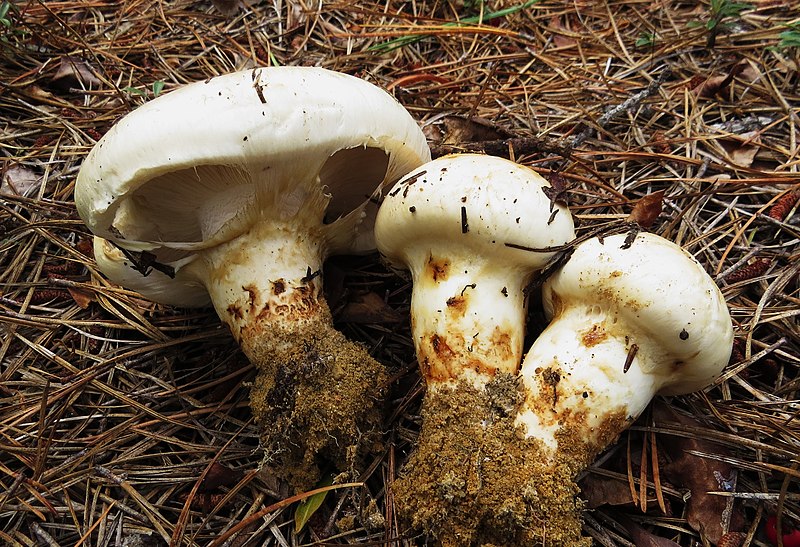
Of the many edible wild mushrooms to be found in North America, certain species are especially sought-after both by hobbyists and commercial mushroom hunters. One of the most valued is the matsutake mushroom. There are several species that may be called matsutakes, all of which are in the genus Tricholoma. The two that will be addressed in this article are T. magnivelare and T. murrillianum, though adept mushroom hunters may also wish to look for T. caligatum, which is usually considered edible but not quite on par with the other two species.
Identifying the Matsutake
The matsutake is, at first look, a large white gilled mushroom, often with a pronounced annulum or ring around the stipe below the cap. It may sometimes have orange to light brown spots on the cap and gills, particularly when older. Mature matsutake caps tend to be convex or flat in profile. The stipe is white and may have brown spots or scales below the ring. If you pick rather than cut a matsutake, the base of the stipe tends to be tapered. The spores are white, and if viewed under a microscope will be oval in shape and smooth in texture.
This is a firm mushroom that some people may consider a bit on the tough side; it is less likely to be taken over by bugs than softer mushrooms like boletes. A great way to tell the matsutake from other similar mushrooms is that its flesh can be peeled similar to string cheese. Probably the most noteworthy trait of the matsutake is its aroma, which has been described as being “spicy”, “musty”, “fruity”, or even “like old gym socks”.

On the Hunt for Matsutakes
Fall is the best time to look for matsutakes, though T. murrillianum may fruit into mid-winter in some places. Because these mushrooms are so highly prized, competition for them is fierce; commercial mushroom hunters will often clear out flushes of them year after year. Even when undisturbed they can be challenging to locate, but your best bet is to start someplace where pines and other conifers, madrone and manzanita, chinquapin, or tanoak trees grow, as they have mycorrhizal relationships with these trees. They may also sometimes be found close to huckleberry or rhododendron shrubs. They often hide beneath the duff on the forest floor, and may only be recognized as lumps beneath layers of conifer needles or old leaves. If you find one, though, keep looking as there are likely to be others scattered in the same area. These are not the most abundant of mushrooms, so don’t be discouraged if you come home empty-handed.
T. magnivelare was once considered to represent matsutakes found across North America; however, more recent research has shown that it is a separate species from T. murrillianum. T. magnilevare is found in eastern North America except in Mexico. It is especially abundant in the northeastern United States as well as southern Ontario and Quebec.
T. murrillianum is the western matsutake, and it grows all along the Pacific coastline from central California to southern British Columbia, though a few specimens may be found further inland.
Should you be successful, you have a wealth of options for recipes. They can be eaten raw or cooked, but they’re best prepared simply so as to not destroy the aroma. Simply slicing them thickly and then broiling or grilling with a little olive oil will let them shine. However, the classic Japanese dish matsutake gohan (pine mushroom rice) is also worth the effort.
A Pricey Commodity
T. matsutake itself is not found in North America. Rather, it is native to southeastern Asia, and is especially sought-after in Japan. Because demand is so high and matsutakes can be difficult to find, large numbers of the North American species are exported to Japan every year. They’re similar enough to the Asian species to satisfy buyers and fill culinary needs.
Like other mycorrhizal fungi, matsutakes have proven difficult to cultivate reliably. However, a 2020 study outlined some encouraging progress in matsutake cultivation, though nowhere near enough to be commercially viable.
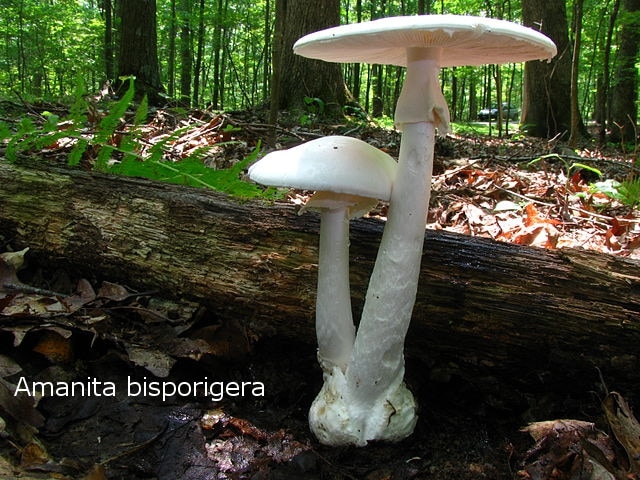
Dangerous Lookalikes
Not all large white mushrooms are matsutakes. The most dangerous are several Amanita species; in North America these include A. bisporigera, A. ocreata, and A. phalloides. All three of these can be lethal if consumed, so EXTREME caution is recommended when differentiating them from matsutakes. A. smithiana is also quite toxic, though less likely to be lethal; A. silvicola is also to be avoided. The Amanita species lack the matsutake’s characteristic aroma, the flesh is more brittle, and the base has a bulb and sometimes a cup, rather than tapering.
—————
Written by Rebecca Lexa
Rebecca Lexa is a certified Master Naturalist in the Pacific Northwest. She teaches classes on foraging and other natural history topics, both online and off. More about her work can be found at http://www.rebeccalexa.com.
Many of our readers find that subscribing to Eat The Planet is the best way to make sure they don't miss any of our valuable information about wild edibles.
See our privacy policy for more information about ads on this site

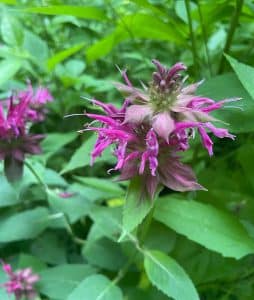
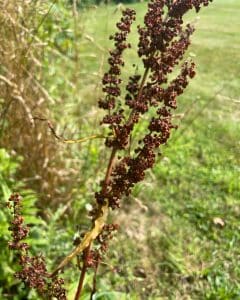



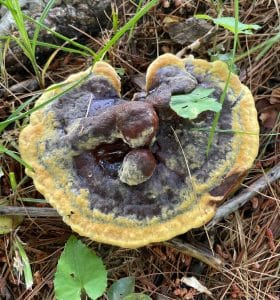
2 Responses
Love reading about foraging, edible & inedible mushrooms especially. Thanks for the great read.
You’re very welcome! Please let me know if you have further questions 🙂